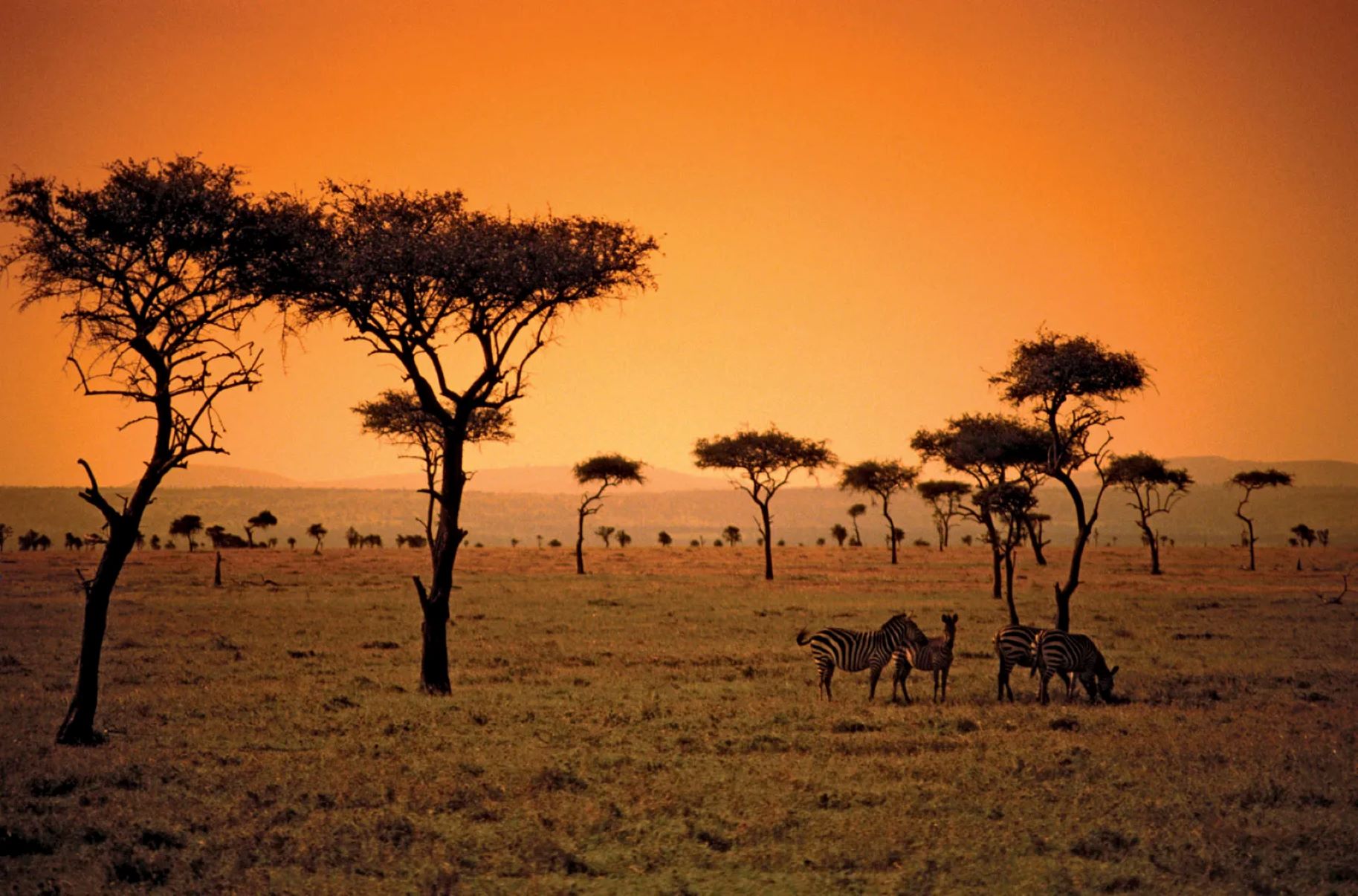
Tropical savannas are fascinating ecosystems that can be found in various parts of the world, including Africa, South America, and Australia. These unique regions are characterized by a combination of grasslands and scattered trees, creating a picturesque landscape that is teeming with life. In this article, we will explore 18 fun facts about tropical savannas that will not only amaze you but also give you a deeper appreciation for these incredible habitats. From their diverse animal populations to their vital role in the balance of the Earth’s climate, there is so much to learn and admire about tropical savannas. So, let’s dive in and discover the wonders of these captivating environments.
Key Takeaways:
- Tropical savannas are dynamic ecosystems with alternating wet and dry seasons, supporting diverse wildlife and showcasing unique adaptations to fire and drought.
- The iconic African savanna is home to majestic animals, including lions, giraffes, and elephants, while also serving as a vital habitat for migratory birds and promoting biodiversity.
Tropical Savannas are characterized by a distinct wet and dry season.
In these unique ecosystems, the climate alternates between periods of heavy rainfall and prolonged periods of drought, creating a dynamic environment for plants and animals to thrive.
The African savanna is home to some of the most iconic animals on the planet.
From majestic lions and graceful giraffes to herds of elephants and speedy cheetahs, the savanna supports a diverse range of wildlife.
Tropical savannas cover approximately 20% of the Earth’s land surface.
These expansive landscapes can be found in regions such as Africa, South America, Australia, and India, showcasing the global prevalence of this ecosystem.
The grasses in tropical savannas are adapted to withstand frequent fires.
These grasses have deep roots and can quickly regenerate after a fire, allowing them to thrive in the savanna’s fire-prone environment.
Giraffes can reach speeds up to 35 miles per hour.
These majestic creatures use their long legs and necks to gracefully navigate the savanna while searching for leaves to eat from the treetops.
Savannas are often referred to as the “cradle of evolution.”
The diverse array of habitats and resources available in the savanna has led to the evolution of numerous plant and animal species.
Zebras have unique black and white striped coats.
This striking pattern not only helps to camouflage them but also confuses predators, making it difficult to single out an individual zebra within a herd.
Tropical savannas are a crucial habitat for migratory birds.
During the dry season, when food becomes scarce, millions of birds flock to the savanna, creating a spectacle of color and sound.
The baobab tree is a common sight in tropical savannas.
These massive trees have thick trunks and can store water, allowing them to survive in the harsh arid conditions of the savanna.
Warthogs are known for their distinctive tusks and warty facial features.
These sturdy creatures can often be seen digging in the ground with their snouts in search of roots, bulbs, and insects to eat.
The annual migration of wildebeests and zebras in the African savanna is a breathtaking sight.
Millions of these animals embark on a long and treacherous journey in search of greener pastures, attracting tourists from around the world.
Savannas are home to a variety of grazing animals.
Grazers such as antelopes, buffaloes, and gazelles play a crucial role in maintaining the balance of the ecosystem by controlling the growth of grasses and promoting biodiversity.
The termite mound is a common feature in the savanna landscape.
These towering structures serve as homes for termites and provide vital shelter for other species, such as lizards and small mammals.
The African elephant is the largest land mammal on Earth.
These gentle giants can weigh up to 7 tons and play a vital role in shaping the savanna ecosystem through their feeding and migration patterns.
Acacia trees are well-adapted to the savanna environment.
Their long thorns protect them from being eaten by herbivores, while their leaves provide essential food for giraffes, elephants, and other browsing animals.
Drought-resistant grasses dominate the savanna landscape.
These grasses have developed deep root systems and can go dormant during periods of prolonged drought, allowing them to survive during harsh conditions.
Tropical savannas often experience spectacular lightning storms.
The combination of heat, moisture, and atmospheric conditions in these regions creates a perfect recipe for dramatic electrical displays.
Humans have utilized tropical savannas for centuries for agriculture and pastoral purposes.
Communities have found ways to thrive in these challenging landscapes by cultivating crops and grazing livestock, adapting to the cyclical nature of the savanna.
Conclusion
In conclusion, tropical savannas are fascinating ecosystems that are characterized by their unique climate, diverse wildlife, and distinctive vegetation. These regions are found in different parts of the world, including Africa, South America, and Australia, and they play a crucial role in maintaining the overall balance of the planet’s ecosystems.From the incredible migrations of wildebeests to the towering termite mounds, there is an abundance of interesting facts to discover about tropical savannas. Understanding these facts not only enhances our knowledge of the natural world but also highlights the importance of conservation efforts to protect and preserve these ecosystems for future generations.So, whether you’re captivated by the vast grasslands, curious about the behaviors of savanna animals, or want to explore the unique adaptations of plants, the world of tropical savannas offers a treasure trove of wonders waiting to be explored.
FAQs
1. What is a tropical savanna?
A tropical savanna is a type of ecosystem characterized by a combination of grasses and scattered trees, and it experiences seasonal rainfall patterns.
2. Where are tropical savannas found?
Tropical savannas can be found in various regions around the world, including Africa (e.g., Serengeti National Park), South America (e.g., Brazilian Cerrado), and Australia (e.g., Kakadu National Park).
3. What is the climate like in tropical savannas?
Tropical savannas typically have a hot climate with distinct wet and dry seasons. The average temperature is usually warm throughout the year.
4. What kind of animals live in tropical savannas?
Tropical savannas are home to a diverse range of animals, including large mammals like lions, elephants, and giraffes, as well as various bird species, reptiles, and insects.
5. How do plants adapt to the tropical savanna environment?
Plants in tropical savannas have evolved various adaptations to survive in the environment, such as deep root systems, thick bark, and the ability to tolerate drought and fire.
6. Are tropical savannas endangered?
Some tropical savannas face threats due to human activities like deforestation, land conversion, and climate change. Conservation efforts are essential to protect these ecosystems and the species that depend on them.
Was this page helpful?
Our commitment to delivering trustworthy and engaging content is at the heart of what we do. Each fact on our site is contributed by real users like you, bringing a wealth of diverse insights and information. To ensure the highest standards of accuracy and reliability, our dedicated editors meticulously review each submission. This process guarantees that the facts we share are not only fascinating but also credible. Trust in our commitment to quality and authenticity as you explore and learn with us.


